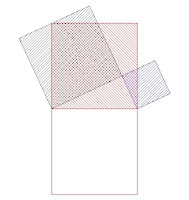The dome actually worked! All three fourth grade classes rolled, measured, cut, marked, counted, and assembled two geodesic domes at the Integrated Arts Academy. A quality assurance team was established in order to ensure the newspaper rolls were strong and tight. Partner work was important, so students had one person tape while another person held newspaper rolls in place. Math was happening all around. The domes initially worked great, but then started to droop and fall after a few days. Students fixed them up and brainstormed ways to make them stronger.
This project was shared during an all-school assembly. Three of the fourth graders presented the work with a slideshow created by their class. More fourth graders sat inside one of the domes (to everyone’s delight!) in order to hold it up if it started to droop during the presentation. It didn’t need any support but it was really fun to have them sitting in there. The presentation touched on the math, art, and engineering in this project. Students also explained Buckminster Fuller's humanitarian vision for the geodesic dome.
I loved collaborating with Ada Leaphart, Judy Klima, and the fourth graders at IAA. I hope to do it again soon. There are so many wonderful opportunities to connect math and art in meaningful ways.












